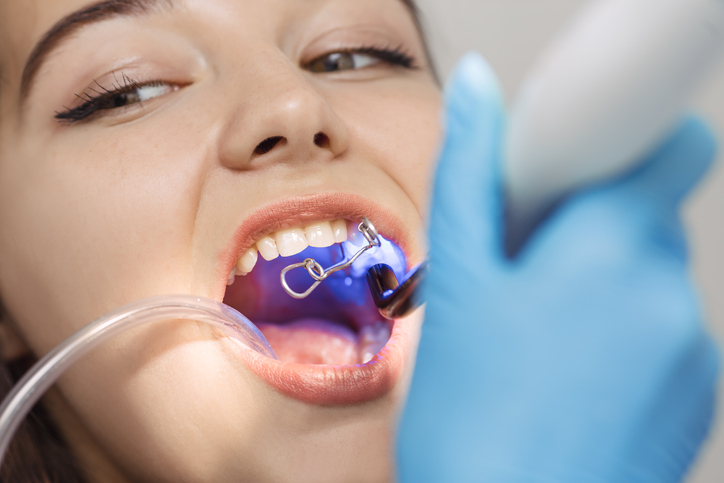
Dental bonding is one option for treating your periodontal disease. Here’s what you need to know.
Looking for a less expensive alternative to restore chipped, stained, or oddly shaped teeth? Dental bonding could be the answer! In addition to fixing discolored, misshapen, or damaged teeth, dental bonding can treat periodontal disease, too.
Periodontal disease causes the gums to recede from the tooth root, leaving the root exposed. With the root exposed, your teeth may be more sensitive to hot and cold temperatures. Some people may also be self-conscious about showing so much of their gums when they smile. The good news is that dental bonding can fix periodontal disease.
How can dental bonding fix periodontal disease?
During a dental bonding procedure, the dentist applies resin material to the tooth. The resin material, which matches your tooth color, is also used when filling cavities. After application, a laser light hardens the resin and the dentist will trim the material. This process takes between 30 to 60 minutes and no anesthesia is needed.
For periodontal disease (gum recession), the bonding material is applied to the exposed root. By covering the root, your tooth appears longer and you’ll have a more natural-looking gum line. The bonding material also protects the root from cavities.
Dental bonding for receding gums may also reduce tooth sensitivity. Hot or cold beverages can inflame the roots, but the bonding material acts as a shield against irritating liquids.
Note that you have to take special care of the dental bonding. The resin that is used is susceptible to staining, so you should limit your consumption of staining beverages such as coffee and tea. Bonding material also easily chips. To maintain the bonding material’s shape, don’t chew on hard objects or bite down hard on food.
With proper care, dental bonding can last anywhere from three to 10 years. To extend the life of your dental bonding, follow good dental hygiene practices: brush and floss daily, rinse with an antiseptic mouthwash, and see your dentist twice a year for a checkup. Gum recession is sometimes caused by brushing too forcefully, so be gentle when brushing, and you’ll have a healthy gum line.
Although dental bonding is one popular option to treat periodontal disease, your dentist may recommend other treatments to slow the progression of gum disease. If the space between your gum line and the teeth is five millimeters, a deep cleaning can close the gap. Gum scaling and root planing may also be performed. Talk to your dentist about which treatment method is best for your oral needs.
Ultimately, dental bonding is a common and proven way to treat periodontal disease. Not only does dental bonding help you achieve a more aesthetically pleasing smile, but it can also improve your overall oral health.
Don’t ignore gum disease!
Schedule an appointment at Espire’s location in Colorado Springs today! Our highly trained dentists can check your teeth and repair damage caused by periodontal disease. Don’t live near our Colorado Springs office? Find one of our other locations near you.
Colorado Springs
8610 Explorer Drive #315
Colorado Springs, CO 80920


